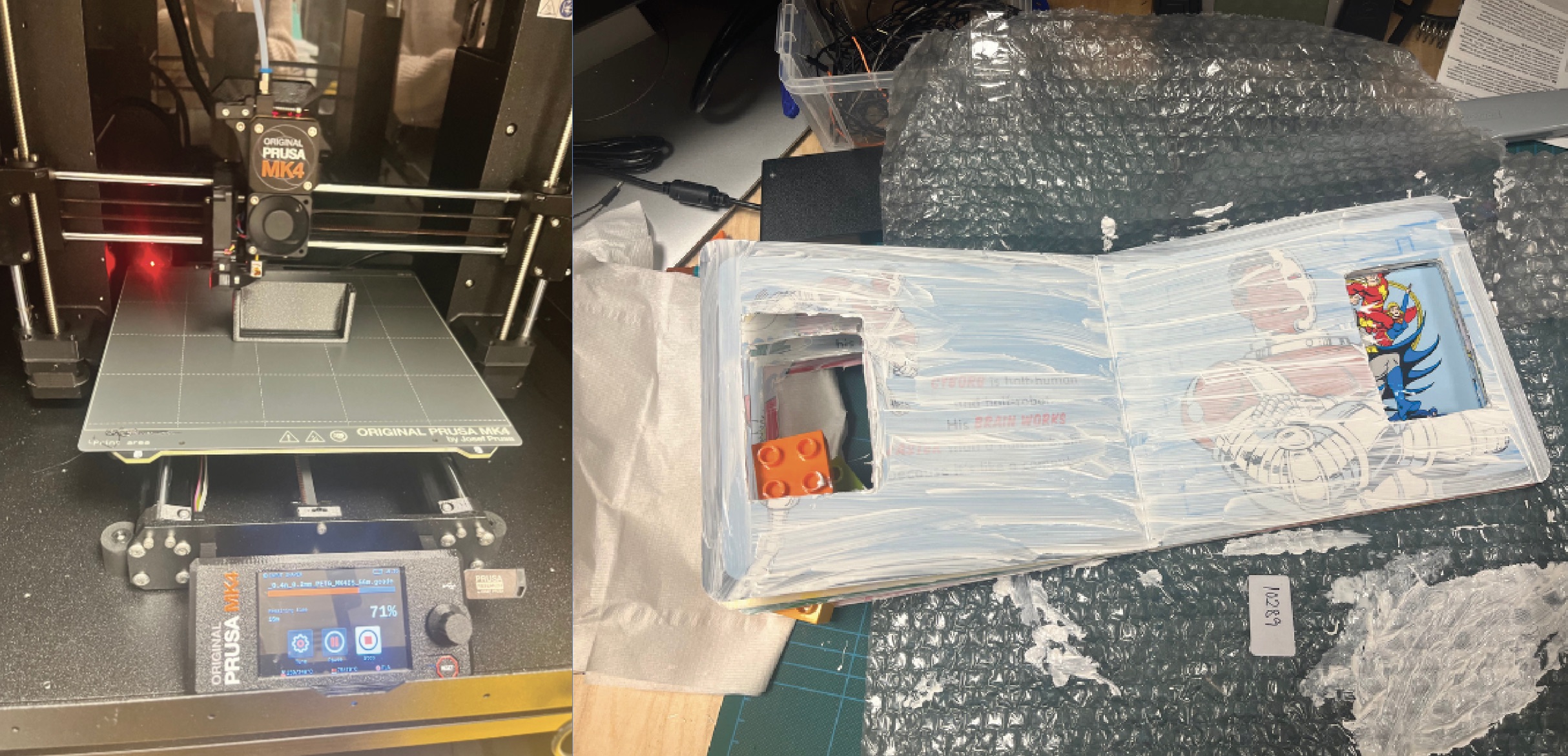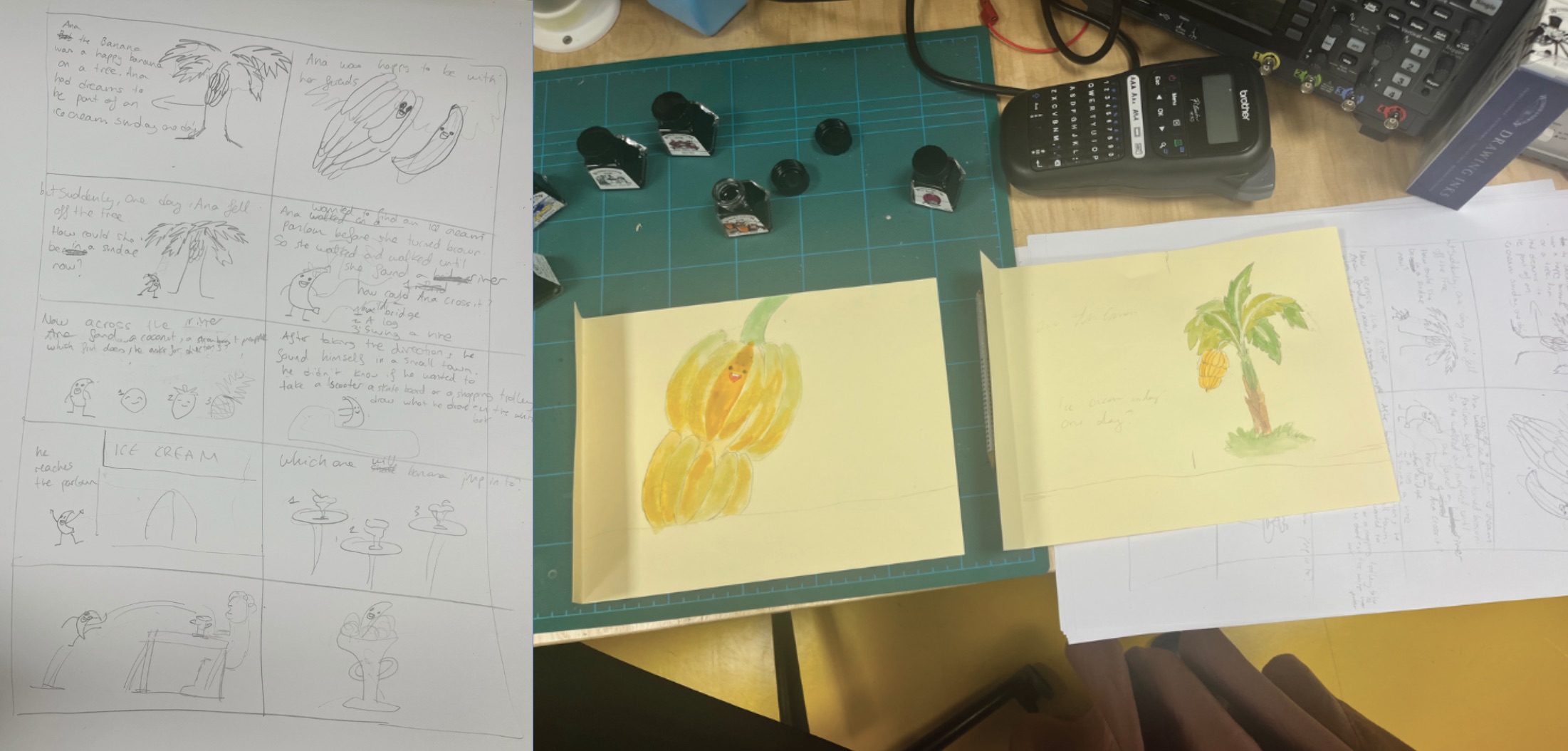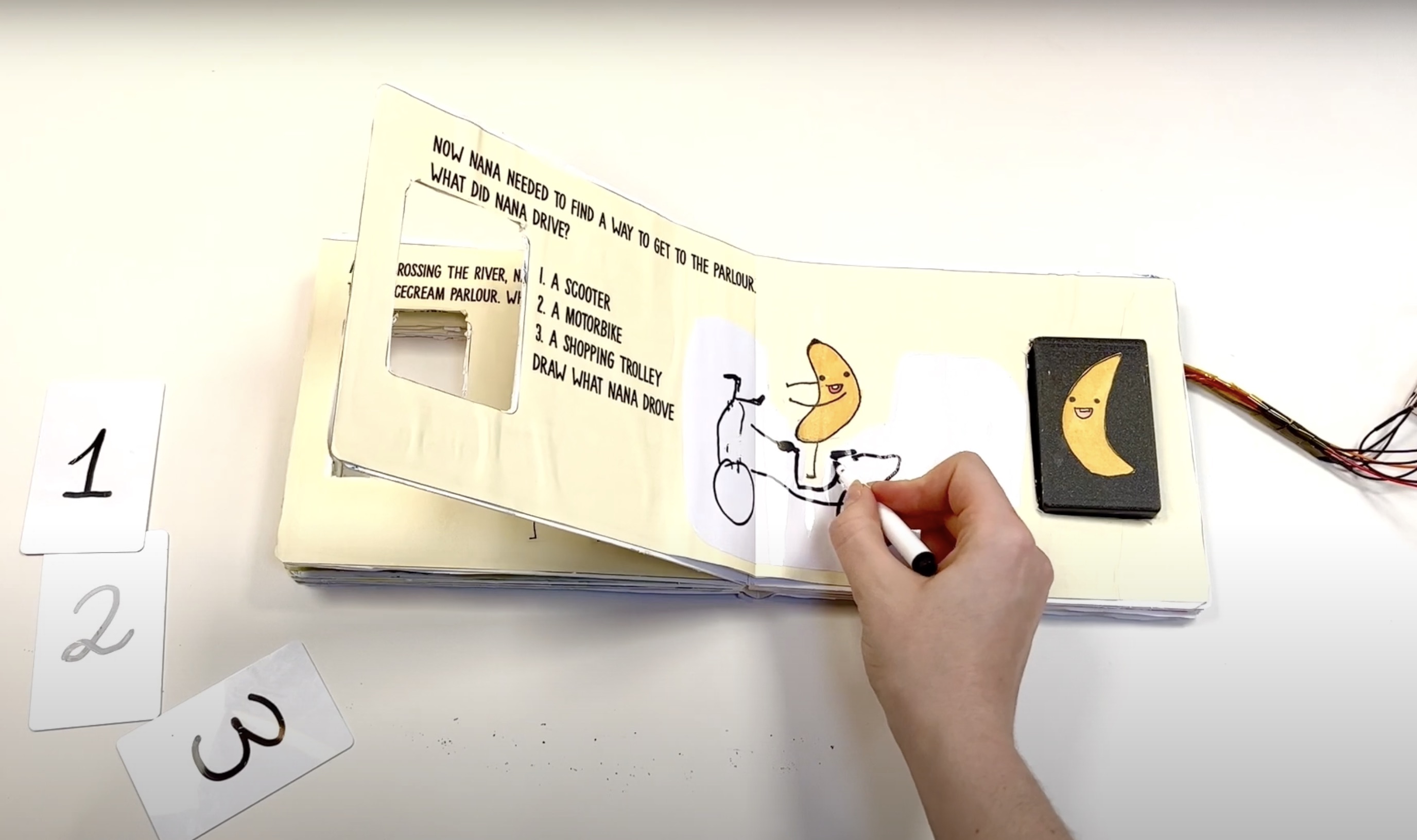Nana the Banana
2024 - Cardboard, Arduino, RFID reader and tags, 3D printed cover. 30 x 17 x 4cm
This custom-made book, featuring hand-drawn illustrations, works with an RFID reader to trigger story changes based on the child’s choices. Powered by Python, an Arduino, and the GPT API, the story gets a fun twist with each interaction, with Nana or other characters saying something new through the speaker, thanks to ElevenLabs voice design.
When used solo, it offers a new twist to the adventure each time, keeping children engaged with the toy. When enjoyed with parents or guardians, both can decide Nana’s next move. Nana serves as a placeholder story, demonstrating a concept that can easily be adapted to various educational themes or different contexts. Kids stay engaged with prompts and at one point even get to draw their choice on a whiteboard.
User Experience Map
Creative Process

I started by 3d printing the cover for the RFID tag reader. I designed it in blender and sent it to a Prusa printer. I hand-cut the shape of the cover on each individual page. If I had had access to the laser cutter I would have used it, but in this case, I used a cutter. I also painted the pages white in case any colors showed through the pages. I then setup the RFID tag reader on the Arduino and worked on the code to send the data to the python sketch.

I hand drew the story board and wrote the narrative for the story. Here is where I organised and planned what I needed to draw. I hand drew the storyboard images using Indian Ink and card. I then scanned these drawings to later re-print with the narrative.

I printed the drawings to see how they would look, and so I could measure the dimensions to fit the cut book. After scanning the images and measuring the dimensions, I edited them in photoshop and added the narrative. After editing the drawing I pritned them in A3 so I could cut them and stick them to the book. I also cut the hole for the RFID tag reader. After sticking the final images to the book, I set up an improvised studio with a tripod to film the book interactivity in action.

I came to the idea of adding a whiteboard paper to the page so that the child could draw the story as it was narrated, which allowed them to have creative freedom and make them feel part of the story. This dynamic page allows the child to feel more engaged and want to re-read the story again.